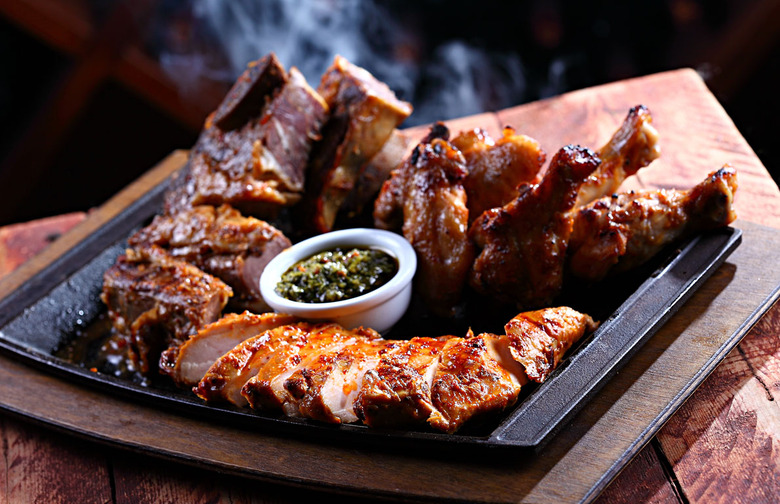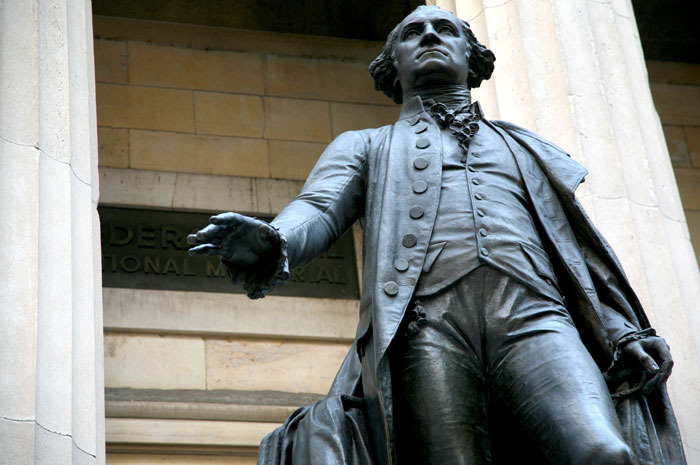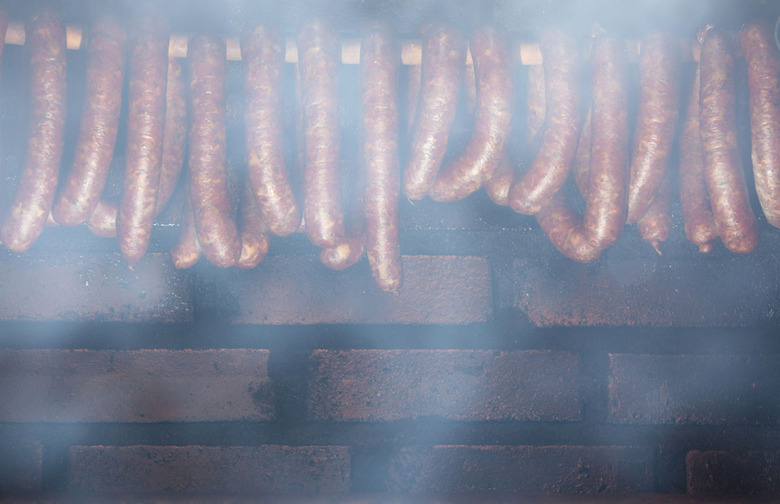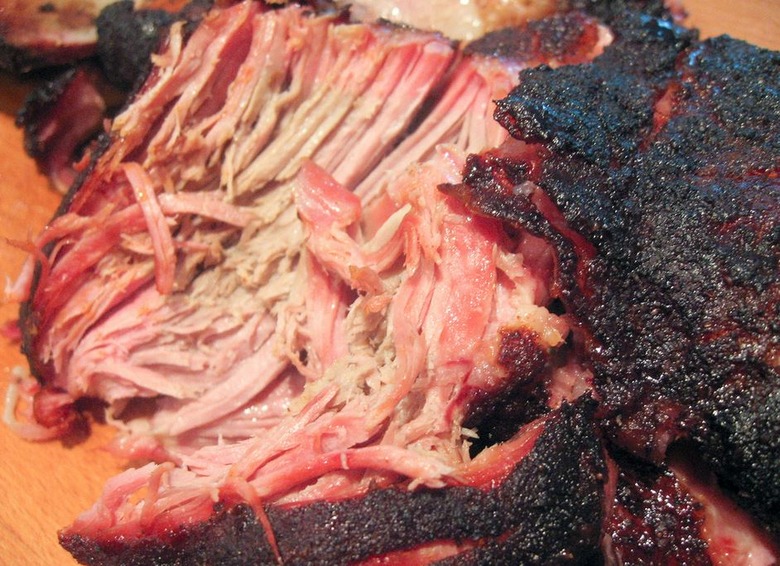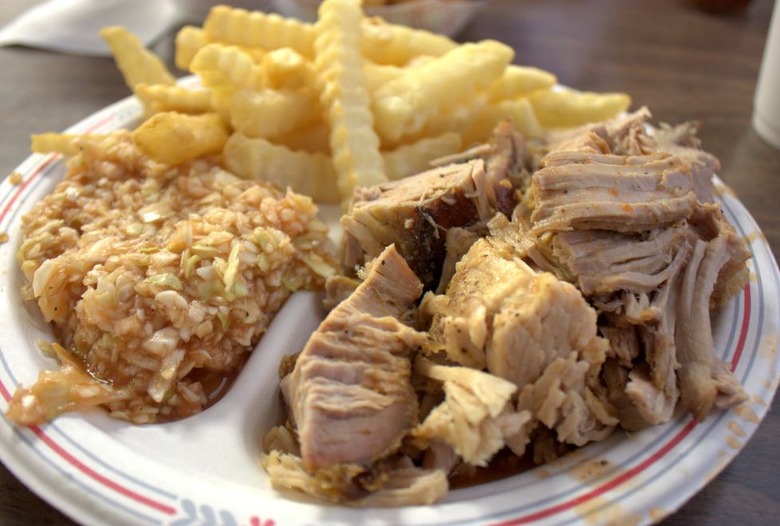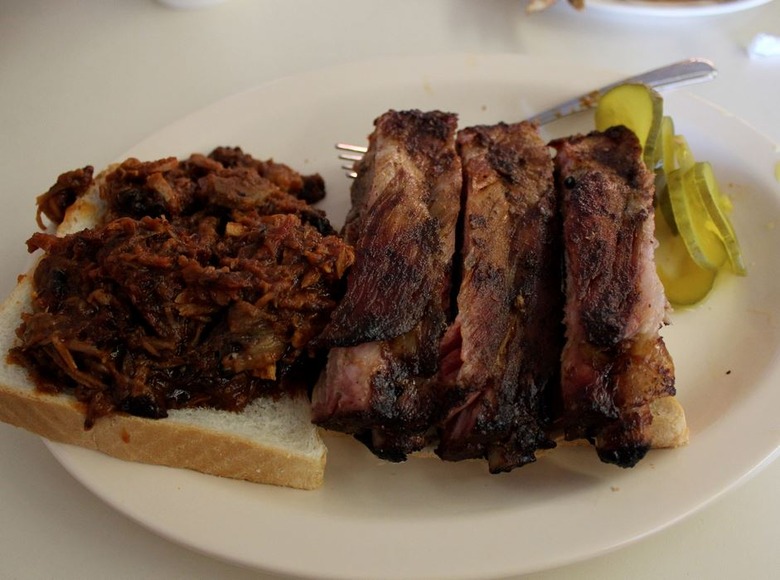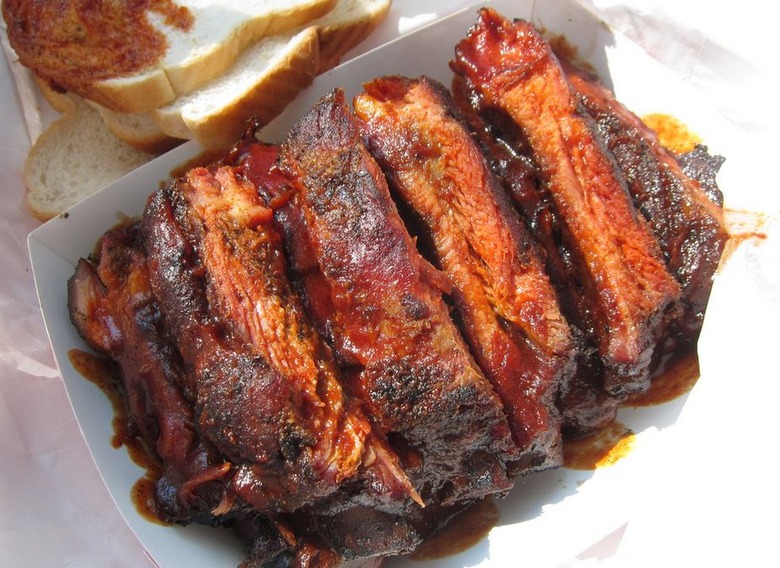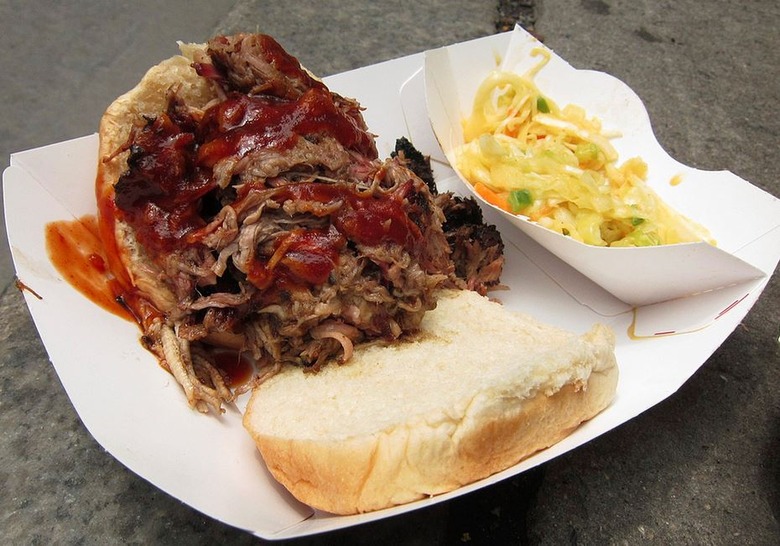10 Things You Didn't Know About Barbecue
There's no other style of food quite like barbecue. When a piece of meat spends hours upon hours inside a smoker, something magical happens, and the resulting product has inspired more fierce and passionate devotion than just about any other type of food on earth. But whether you're a connoisseur or just an occasional rib-eater, we bet that there are some things you didn't know about this wonderful style of cuisine.
Nobody Really Knows Where the Word Comes From
The word barbecue evolved from the Spanish word barbacoa; that much we know. But where the word actually originated is still hotly debated. The leading theory is that its etymology lies in barabicu, a word the Taino people of the Caribbean and the Timucua people of Florida used to mean "a framework of sticks upon posts." (Another theory maintains that it comes from the French words barbe à queue, or "beard to tail," referring to the way a whole animal would be skewered on a rotisserie, but this is widely dismissed as folk etymology.)
George Washington Wrote of Attending a “Barbicue” in 1769
Barbecue in America dates back to the Colonial era; even Washington himself attended barbecues. In 1769, the notoriously bad speller wrote of attending a "barbicue" in Alexandria, Virginia.
The Type of Wood Used Plays a Crucial Role
If you want to make truly great barbecue, you can't just chop down any old tree and use the wood for smoke. Hard woods like hickory, mesquite, oak, and pecan are usually used for pork and beef because they impart a strong smoky flavor, and fruit woods like apple, cherry, and pear impart a sweeter, milder taste and are better for smoking fish and poultry.
The “Smoke Ring” Comes From a Carbon Monoxide-Based Chemical Reaction
You know you're eating real barbecue when the meat has a faint reddish "smoke ring" around its perimeter. This is formed by a chemical reaction between myoglobin, an oxygen-carrying protein in the muscle tissue, and the carbon monoxide in the smoke.
More than 500 Teams Compete in the Largest Barbecue Competition
The American Royal World Championship is the largest barbecue competition in the country, with more than 500 teams competing, on average.
There Are 4 Different Regional Texas Styles
While Texas barbecue is certainly all about the beef, different regions have their nuances. In East Texas, beef is marinated in a sweet tomato-based sauce and slowly smoked over hickory until it's falling off the bone; in Central Texas, it's given a pepper-heavy rub and smoked over pecan or oak; in South Texas, it's basted in a thick, molasses-based sauce; and in the deep south of the state it's all about barbacoa, in which beef, goat, or sheep meat is slow-cooked in a hole in the ground covered with maguey leaves.
The Carolinas Have 6 Different Regional Styles
Barbecue in the Carolinas is all about the pork, either pulled, chopped, or shredded. In eastern North Carolina the "whole hog" is slow-smoked and chopped together with a thin vinegar-based sauce; western North Carolina (whose specialty is also called Lexington barbecue) only uses the shoulder and employs a vinegar- and tomato-based sauce; in western South Carolina the pork is topped with a peppery tomato-based sauce; in the Midlands a "Carolina Gold" sauce made with yellow mustard, vinegar, brown sugar, and spices is popular; near the coast, whole hog topped with a thin spicy sauce is popular; and in the Piedmont area you'll find primarily shoulders, hams, and Boston butts.
Barbecue Was Brought to Kansas City by a Restaurateur Named Henry Perry
There wasn't much in the way of barbecue in Kansas City before Henry Perry showed up in 1907. He opened a small alley stand and sold smoked meat to workers in the city's Garment District before opening a larger spot in an old trolley barn in the 19th and Highland neighborhood, which boomed in popularity in the 1920s and '30s. When he died in 1940, an employee by the name of Charlie Bryant took over the business; Charlie's brother Arthur took it over in 1946 and renamed the restaurant after himself. To this day, Arthur Bryant's is regarded as one of America's best barbecue spots.
Oklahoma Has the Most Barbecue Restaurants Per Capita
According to Estately, Oklahoma is home to one barbecue joint for every 5,000 residents!
More Than 8 Percent of All Restaurants in Alabama are Barbecue Joints
That's the highest percentage in the nation. Connecticut is home to the fewest barbecue joints in the country; in that state, there are seven times more doughnut shops than barbecue restaurants, and in New York State, the percentage of barbecue joints to other styles of restaurants is the lowest in the country.

